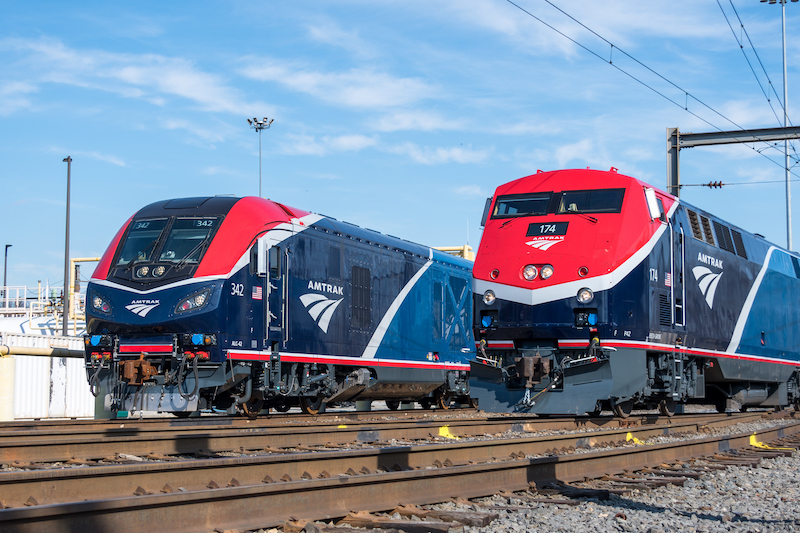Birthdays can be a lot. There are a lot of expectations of what you should do, who you should do it with, what it should feel like, what it should look like to other people.
Some people like to do anything they can to stave off the existential dread of getting older, and others parade around wearing sparkling birthday sashes. No judgement there, I have been both people. Personally, I love to bring my people together to celebrate. Parties, dinners, pedal boat rides around the Boston Harbor. Last year, after repeatedly being burned and burning out, the thought of a birthday brunch with the aftertaste of feeling disconnected from the space I was in and the people I was with made me want to take that time back for myself this year instead.
So this year, as a dark winter slowly melted to give way to new light and opportunities (like this one), so came June again, like clockwork. If there is one thing I’ve learned in my pursuits to travel more and go on more “side quests”, it’s that sometimes a change of scenery can change your perspective. In my case, for my birthday in June, my change of scenery spanned 525 miles from Denver, Colorado to Salt Lake City, Utah.
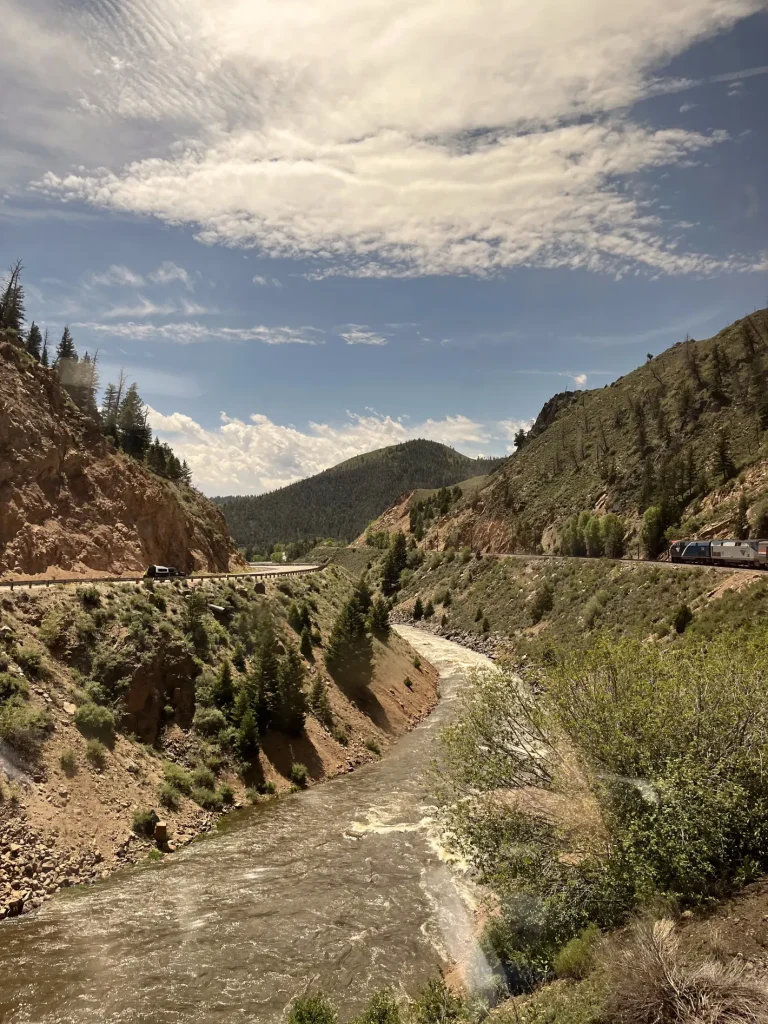
After watching the sun set over Red Sox demolish the White Sox at Guaranteed Rate stadium, I stopped by a Boston-themed sports bar to catch the end of another Celtics playoff win. You know how the saying goes, you can take the Bostonian out of the dirty water, but the dirty water runs deep. At the stroke of midnight on my birthday, you could find me at Harrigan’s Pub in Chicago singing dad-rock karaoke and taking green tea shots with strangers-turned-friends.
The next day, I enjoyed brunch with a lakefront view, explored neighborhoods from Lakeview, to Lincoln Park, to Logan Square, and ended the day with dinner and a RuPaul’s Drag Race watch party at Roscoe’s Tavern.
But the celebration was just getting started. Not even four hours later, running on a questionable amount of sleep and adrenaline, I was off to O’Hare for an early flight to Denver.
From there, I took a train from the airport to Denver’s Union Station, disembarking only to promptly re-embark on the world-renowned California Zephyr Amtrak trainsitting on the next track.
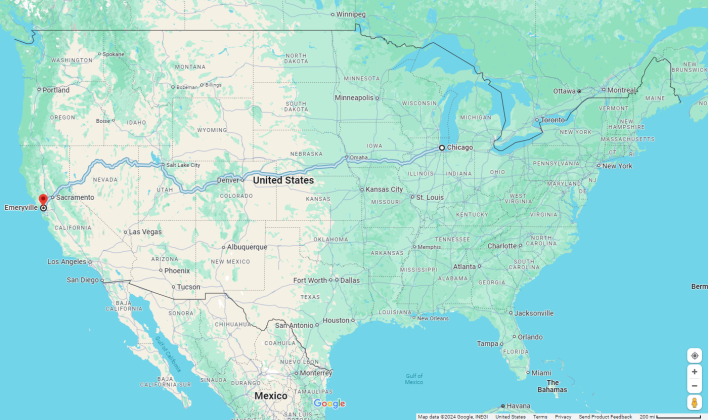
Groups of us shuffled onboard, but I had no time for standing by, I had a strategy. In preparation for this trip, I’d consulted Reddit threads and Google searches to make sure I sat on the side with the best views.
I was pleasantly surprised to see that both have their moments. I headed straight past my seat to the observation car, the floor-to-curved-ceiling windows letting in a golden glow from the sunrise. I snagged some breakfast from the snack car, and we were on our way, with Conductors Cody and Nick at the helm.
I was only getting a slice of America’s most scenic train ride, as the California Zephyr in totality stretches westward from Chicago to Emeryville, California over the course of 52 hours (or just over two days), and I would only be riding the portion from Denver to Salt Lake City.
There’s no wifi on this train, and cell service mostly comes in at major stops with hours of forestry between them. But it’s hard to want to spend any significant amount of time on any other app than the camera when you’re on this ride.
Once we were out of Denver proper, the views really showed out. The part of the route I took takes you through the green and lush Rocky Mountains through western Colorado, and up into Utah’s sprawling deserts and red rocks. As I did on my Coast Starlight journey from Seattle to L.A. last April, I got comfortable in the observation car, phone propped up and ready to take in all the sights.
Turns out, I wasn’t the only one with this bright idea, and the Conductor Cody had to coordinate viewing rotations where every passenger who wanted to got a chance to hang out in the observation car.
While I was in the observation car, though, I was able to meet fellow train travel enthusiasts like Matt who was on a similar journey as me, riding the rails for a new experience. As the train chugged on, we hugged a couple switchbacks that allowed us to see bison grazing and the front of the train curling around Eldorado Mountain.
As we passed over the Colorado River, we saw people rafting along rushing waters, bookended by river banks and trees. Along the river, we caught glimpses of docked rafts and their riders having a river-side day out with their loved ones on the water. We also went through the Moffat Tunnel, the longest tunnel in the United States, cutting 6.2 miles through the continental divide. There wasn’t much to see here, mostly because it was completely dark.
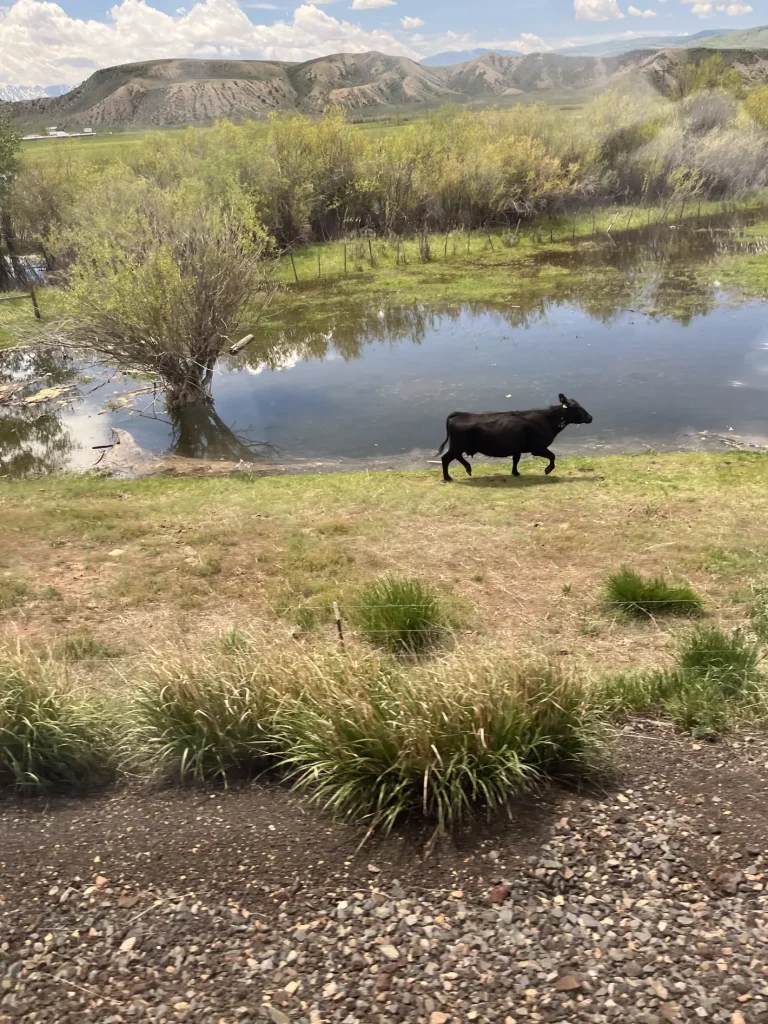
The moons of the mountains
Conductor Cody, who was in no short supply of nuggets of information and train puns that day, warned people traveling with young ones to shield their eyes because it’s a well-known tradition for people outside to moon the train as it passes by.
Amtrak should consider adding this fun fact to their website, because it seems like everyone to Colorado and Utah knows it’s expected of them. The light mooning I thought we were going to see paled in comparison to the repeated and frequent full eclipses we caught.
As we traversed through the heart of the American West, we got mooned 6 times in the span of 30 seconds. Two more moons roll on by. Rafts parked and picnicking people in the shade nearby. Tents, dogs, one more moon. People on fishing trips. Another moon, with the culprit’s confused-looking dog standing nearby. Another moon! A struggling moon attempt, but they could not get their pants down in time (which is hilarious in hindsight, because this train doesn’t move all that fast, clocking in at an average speed of 55 miles an hour #highspeedrail). Kids tubing in the river – a group moon! Where did this tradition come from and why does everyone on this specific route know about it? Final Moon Count: 28.
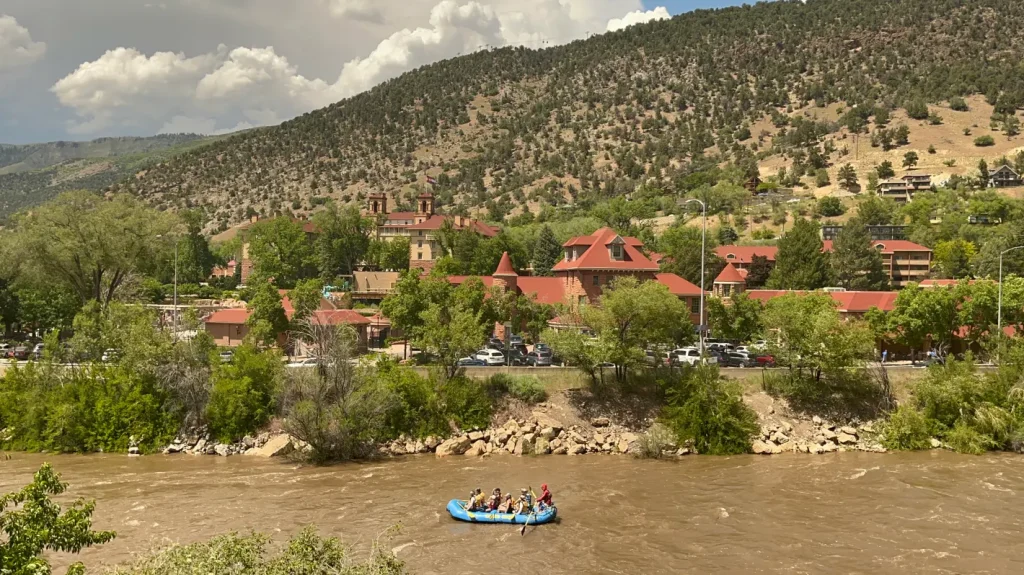
As my time in the observation car ran out, I made my way to lunch in the dining car. It’s one of the more controversial aspects of the Amtrak experience, but I am firmly an Amtrak food apologist. The experience is all-encompassing – you get a view, get to break bread with people at a table of 4, and the food itself is pretty decent with a good amount of options.
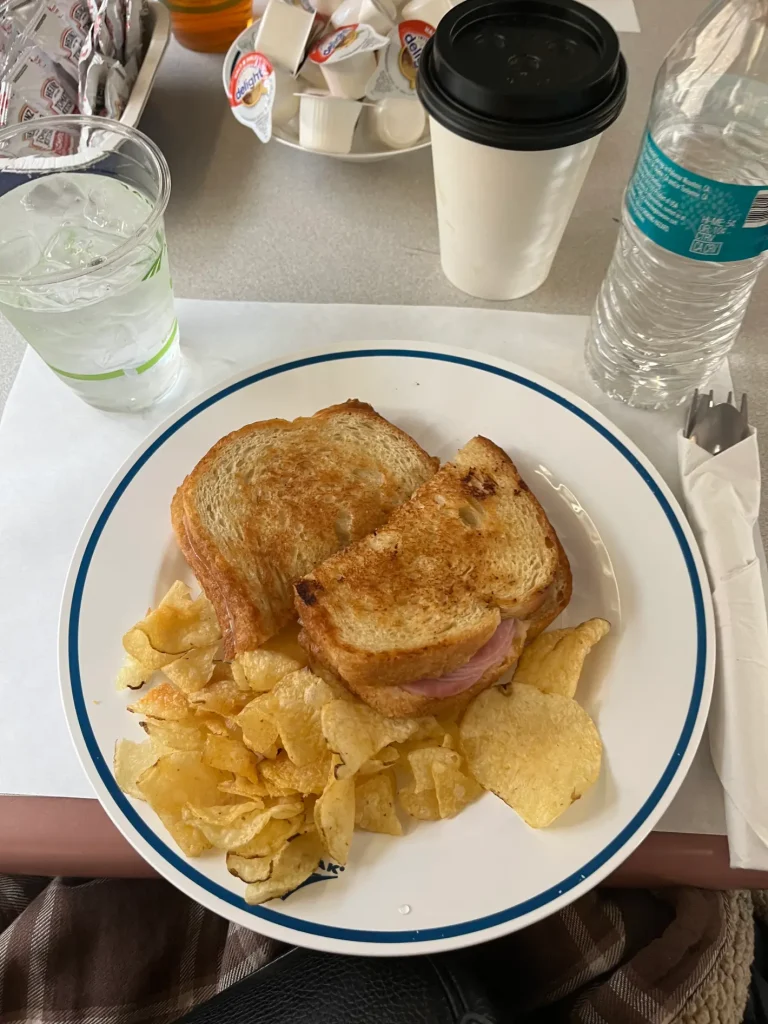
I had the grilled cheese with honey ham for lunch in the Colorado River Valley, and for dinner, I paired the grilled chicken breast and mixed vegetables with the eastern Utah sunset.
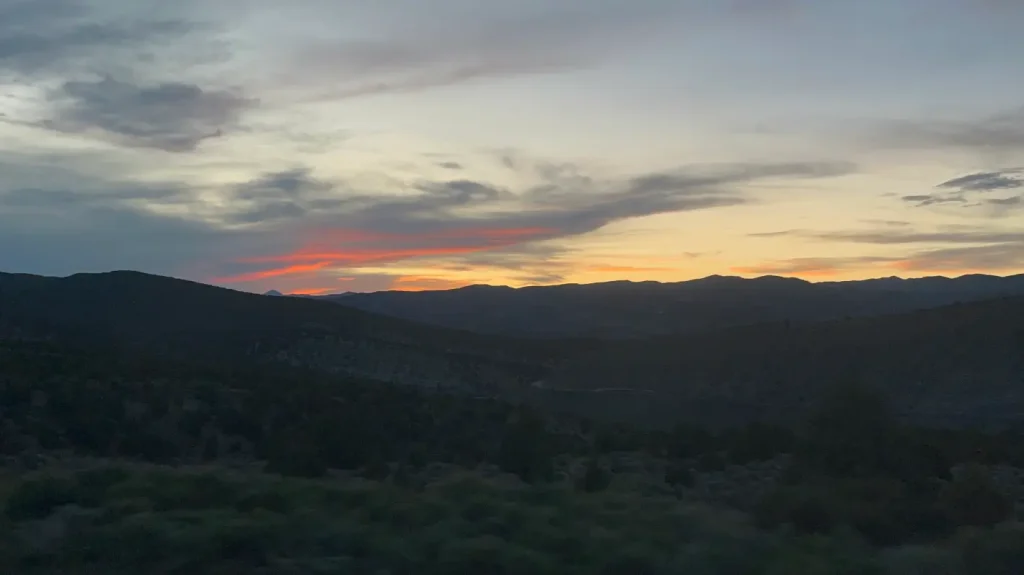
I rounded out the night over wine with a new friend named Michael as we neared Salt Lake City. We drank wine, realized we shared a favorite show, talked about our personal and professional journeys, and watched fireworks going off in the distance behind us, which a quick Google search revealed to us was a fireworks show in Springville, Utah, that was part of their Art City Days concert series. As it got darker out, Michael headed off to bed, and my ride was unfortunately approaching its end.
Community, and a little optimism, on the rails
Since I stepped off the train in Salt Lake City, I have been reflecting on what a special experience taking the train can be. Taking the scenic route is criminally underrated. This was not just a train ride birthday trip, but also a celebration of the joyful returns on committing to one’s self, sustainable travel, connection, and environmentalism.
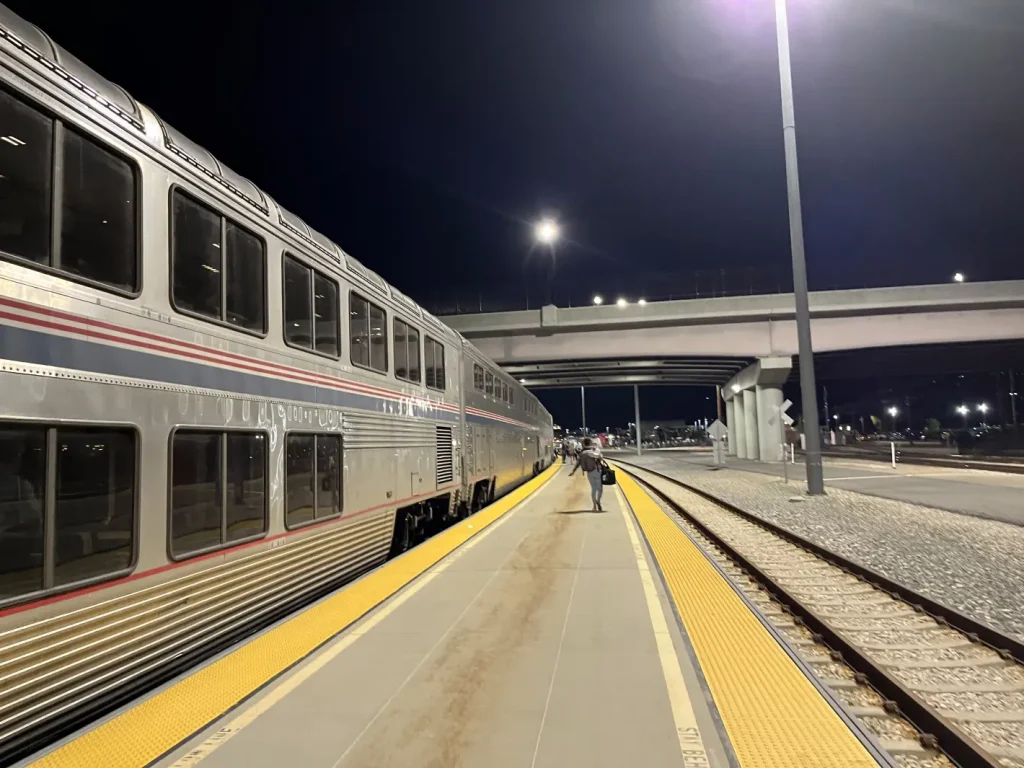
One of the coolest parts of the journey was the connections I forged with strangers along the way. In the dining car over shared meals, or in the observation car looking over the same views, my train-mates and I shared our diverse and unique perspectives with each other and our appreciation for this ride. In beautiful moments of convergence, if only for a meal or a moment, I heard tales of adventure and reflections on life’s challenges.
Stories about life in San Francisco, going on tiger safaris in Sri Lanka, loving a dog named Chardonnay, taking a first trip after a spouse passed away, discussing the grim state of affairs in the U.S. and abroad, commiserating over toxic workplace cultures. Connecting over what brought us here for the first time, why we were taking this route again, or what had inspired us to take other train trips.
It was also so moving to have this shared experience together, affirming that it wasn’t just about the scenery, but also about the human connection fostered by this train trip. Our world has been fraught and fractured. The news has been exceptionally emotionally draining as we reckon with stories out of Gaza, continued far-right threats to our democracy as we know it, the struggles to recover from a pandemic while new variants and mask mandates quietly resurface, the rights of marginalized people shamelessly and mercilessly being stripped. It can (and does) feel like all too much, screaming into the void.
However, I found that when we were able to break down walls between us with vulnerability, empathy, shared experiences, openness, maybe a little eye contact or a nod of acknowledgement, it could lead to a desire to share, a desire to learn, and a desire to find common ground. We didn’t necessarily solve the world’s problems on this ride, but I left it with a more restored faith in people, and feeling reinvigorated to do what is in my locus of control to create positive change in our society.
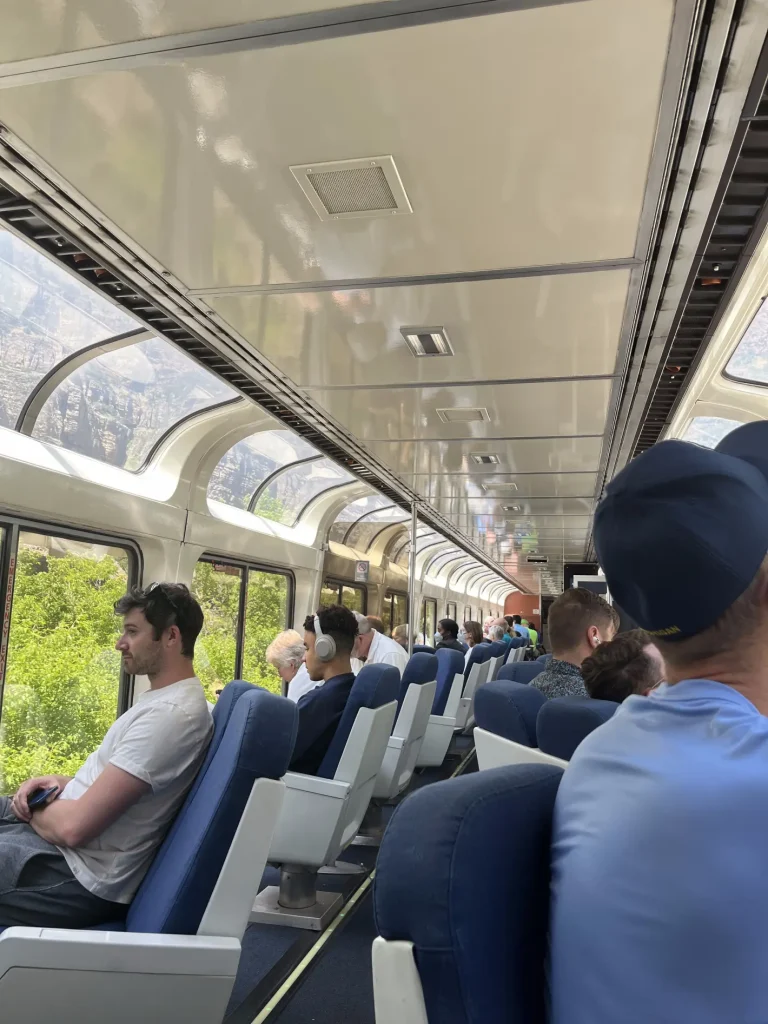
Towering mountains, expansive plains, winding rivers. To have the opportunity to be a fly on the wall, passing through miles of untouched beauty and nature, felt particularly special to me. But sitting in that train car also felt like sitting in the space between progress and preservation.
Considering the shadow of climate change that looms large and darkens our futures with uncertainty and anxiety, it’s important now more than ever that we are able to reconnect with nature through more sustainable modes of transportation, like Amtrak. As we move forward, there are promising signs that the U.S. is beginning to embrace this shift. Initiatives like the Bipartisan Infrastructure Law, which includes significant investments in rail infrastructure, and the $8.2 billion-dollar investment in new funding for passenger rail projects across the country signal a growing recognition of the need for expanded and modernized rail services. Projects aimed at enhancing passenger rail networks, such as high-speed rail corridors and improved regional services, are steps in the right direction.
Investing in rail travel intersects with broader social justice issues that impact all of us in some way. By enhancing rail access, we not only support environmental sustainability but also dismantle systemic inequalities and combat environmental racism. Expanded and reliable rail services can bridge transportation gaps for marginalized communities, who have for too long been subjected to significant, historical, policy barriers to affordable and accessible travel. Improved transportation infrastructure can reduce reliance on cars, which disproportionately impacts communities living in areas with higher pollution.
Every investment in rail travel contributes to the broader movements of environmental and social justice, reflecting our collective responsibility to nurture and protect our planet for the well-being of all. Coming together in community as riders, policymakers, and advocates to invest in, fund, and maintain these services can preserve our natural wonders and promote social equity, ensuring that future generations can experience the same stunning journeys and have a fair shot at a healthy and full life.
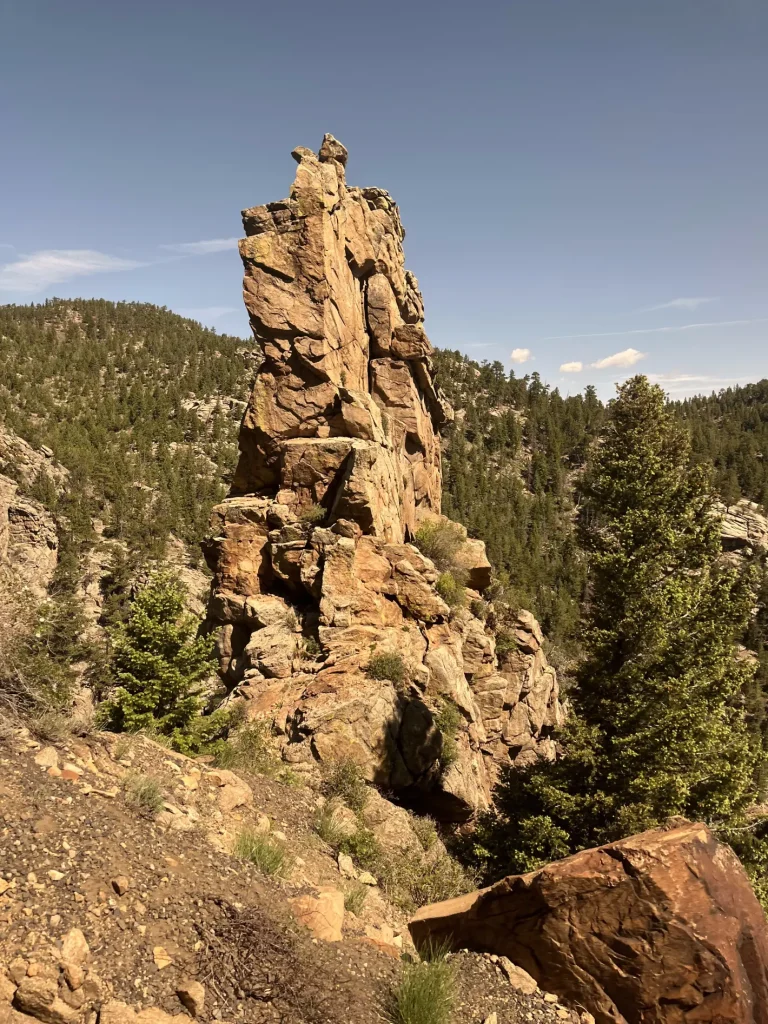
When we treat this world and each other right, we get these beautiful moments of connection that I personally find very grounding. Strangers become friends, stories are exchanged, joy gets shared, perspectives are broadened.
Train travel connects you with your surroundings in a way that flying over states or driving in an individual car cannot. It’s a journey that I hope more people will take, not just for the cities it takes you to, but also for the relationships it fosters with our natural world, each other, and ourselves.
And I continue to learn and impart the lesson I’ve been learning of just how important it is to care for yourself and celebrate yourself authentically, disconnecting from the pressures of perception and expectations that aren’t your own. Sometimes, that requires taking the scenic route and changing up your perspective.
StreetBlog
